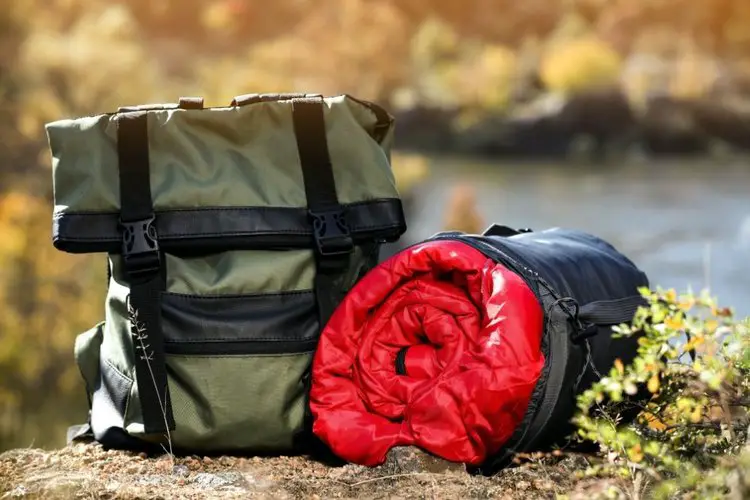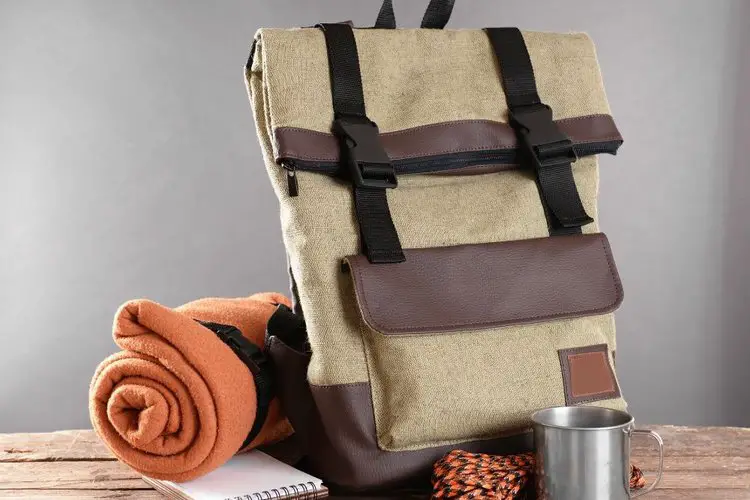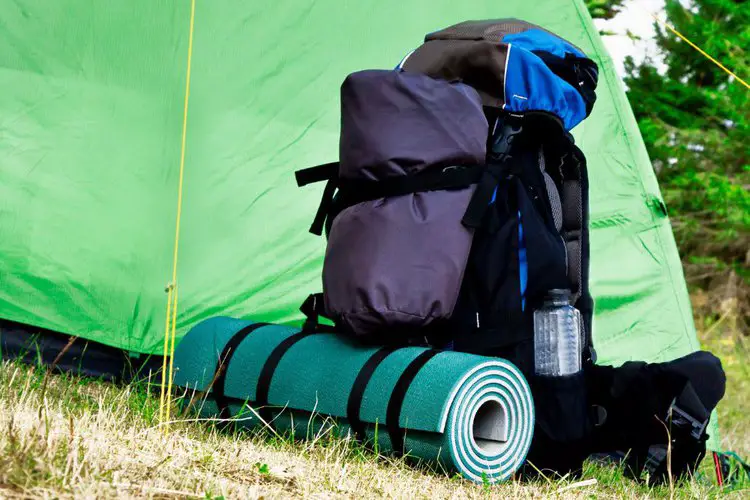Samantha was an experienced hiker who had been on many adventures before.
She had her favorite hiking backpack that she used for every trip, and she always knew how to pack her gear efficiently. But on this particular trip, Samantha made a crucial mistake.
She had recently purchased a new sleeping bag that was slightly larger than her old one. Samantha assumed that her backpack would still be able to fit the new sleeping bag, just as it had fit the old one.
Without measuring or testing, she simply packed the sleeping bag into the bottom compartment of her backpack and started on her hike.
The first few miles of the hike were uneventful, and Samantha felt confident in her gear.
However, as the trail became steeper and more challenging, Samantha began to feel discomfort in her back. Her backpack felt heavy and unbalanced, and she couldn’t find a comfortable position to carry it.
Eventually, Samantha had to stop and unpack her backpack to figure out what was wrong. As she removed her gear, she realized that her sleeping bag was too big for the backpack.
It had taken up too much space in the bottom compartment, throwing off the balance of the backpack and causing discomfort in her back.
Samantha felt frustrated and disappointed. She had made a careless mistake and now had to deal with the consequences.
She knew that she couldn’t continue the hike with an unbalanced backpack, so she had to make a difficult decision.
She either had to turn back and abandon the trip, or she had to leave some of her gear behind to make room for the sleeping bag.
In the end, Samantha decided to leave behind some of her non-essential gear and continue the hike.
She learned a valuable lesson about the importance of testing gear before embarking on a trip, and she promised herself that she would never make the same mistake again.

Contents
Potential Risks of Improper Sleeping Bag Attachment on a Hiking Trip
Attaching a sleeping bag to a hiking backpack the wrong way can result in several negative consequences, including:
- Discomfort: If the sleeping bag is attached in a way that throws off the balance of the backpack, it can cause discomfort and pain in the hiker’s back, shoulders, and hips. This can make the hike much more challenging and uncomfortable.
- Reduced mobility: If the sleeping bag is attached in a way that limits the hiker’s mobility, it can make it difficult to navigate steep or rocky terrain. This can increase the risk of falls or other injuries.
- Damage to gear: If the sleeping bag is not properly secured to the backpack, it can shift around during the hike and cause damage to other gear or the sleeping bag itself. This can result in costly repairs or replacements.
- Reduced storage capacity: If the sleeping bag is attached in a way that takes up too much space in the backpack, it can reduce the available storage capacity for other essential gear. This can make it difficult to bring everything needed for the trip.
- Safety risks: If the sleeping bag is attached in a way that interferes with the hiker’s balance or mobility, it can increase the risk of accidents or injuries on the trail. This can be dangerous, especially in remote or rugged areas where help may not be readily available.
Overall, it’s crucial to attach a sleeping bag to a hiking backpack properly to ensure comfort, safety, and efficiency during a hike.

A Comprehensive Guide
With so many backpacks and sleeping bags available, it can be challenging to figure out how to attach a sleeping bag to your hiking backpack.
Fortunately, there are several methods to do so, and in this article, we’ll provide you with a comprehensive guide on how to attach your sleeping bag to your hiking backpack, step by step.
What to Prepare and Note
Before you attach your sleeping bag to your hiking backpack, there are a few things you should prepare and note:
- Make sure your backpack is the right size for your sleeping bag.
- If your backpack is too small, you won’t be able to fit your sleeping bag inside, and if it’s too big, your sleeping bag will bounce around inside the bag, making it difficult to carry.
- Check the weight capacity of your backpack before you load it up with gear. Overloading your backpack can lead to discomfort and injury.
- When attaching your sleeping bag to your backpack, make sure it is secured tightly and won’t bounce around while you’re hiking.
- If you’re hiking in wet conditions, make sure your sleeping bag is stored in a waterproof stuff sack or plastic bag to protect it from moisture.
- SAVE 40% MORE SPACE: Frelaxy Compression Stuff Sack is an incredibly simple and practical solution...
- Made of high-quality 210T Tear Resistant Polyester Material, Effectively balances LIGHTWEIGHT (only...
- Considerate Design: 1. Comes with 4 adjustable straps for even compression (2 Strong compression...
Last update on 2023-11-11 / Affiliate links / Images from Amazon Product Advertising API
Tips for Adjusting Your Sleeping Bag:
- Make sure the sleeping bag is centered on the backpack
- Avoid overstuffing the sleeping bag
- Attach the sleeping bag low on your backpack to keep your center of gravity low
- Tighten the sleeping bag to prevent it from swaying from side to side
- Adjust the backpack straps to ensure a comfortable fit
- Don’t attach your sleeping bag in a way that throws off your backpack’s balance
- Don’t attach your sleeping bag too high on your backpack

Here’s a general guide for matching sleeping bag size with backpack size:
- Backpacks under 40 liters
You’ll want a compact sleeping bag that can compress down to a small size, such as a lightweight backpacking or ultralight sleeping bag.
Look for a sleeping bag with a packed size of around 6-8 liters.
- Backpacks between 40-60 liters
You can go for a slightly larger sleeping bag that offers more comfort and warmth, but still compresses down to a reasonable size.
Look for a sleeping bag with a packed size of around 10-12 liters.
- Backpacks between 60-80 liters
You can choose a slightly larger sleeping bag for more comfort and warmth, and it can still fit in your backpack without taking up too much space.
Look for a sleeping bag with a packed size of around 12-15 liters.
- Backpacks over 80 liters
You can choose a larger sleeping bag for maximum comfort and warmth, but make sure it can still fit in your backpack without taking up too much space.
Look for a sleeping bag with a packed size of around 15-20 liters.
Of course, these are just general guidelines, and the specific size of sleeping bag you need will depend on factors such as the weather conditions you’ll be facing, your personal preferences for warmth and comfort, and the other gear you’ll be carrying in your backpack.
It’s always a good idea to check the dimensions and weight of both your sleeping bag and backpack before making a purchase, and to try out different combinations to see what works best for you.

Method 1: Using Compression Straps
One of the most common ways to attach a sleeping bag to a hiking backpack is by using compression straps.
Most hiking backpacks have compression straps on the bottom or sides of the bag, which are designed to hold gear like sleeping bags in place.
To attach your sleeping bag using compression straps, follow these steps:
Step 1: Roll up your sleeping bag as tightly as possible, making sure to remove any excess air.
Step 2: Place the rolled-up sleeping bag into the bottom compartment of your backpack or into the main compartment, depending on the size of your bag and sleeping bag.
Step 3: Secure the compression straps over the sleeping bag, tightening them until the sleeping bag is held securely in place.
- Durable! Material: Rugged construction
- Width: 1 inch(2.5 CM) . 40" long.
- Adjustable: Each strap has adjustable hoop.
Last update on 2023-11-10 / Affiliate links / Images from Amazon Product Advertising API
- Suitable for:
Day hikes or short overnight trips with a small or medium-sized sleeping bag that compresses well.
- Sleeping bag size:
Small to medium, typically rated for temperatures above freezing.
- Why:
This method is great for shorter hikes when you don’t need a lot of gear and want to keep your pack as light as possible.
It works best with sleeping bags that can compress down to a small size, so it may not be suitable for larger or bulkier sleeping bags.
Method 2. Using a Sleeping Bag Compartment
Many hiking backpacks also come with a dedicated sleeping bag compartment, which is designed to hold your sleeping bag separate from the rest of your gear.
This compartment is usually located at the bottom of the bag and is separated from the main compartment by a divider.
To attach your sleeping bag using a sleeping bag compartment, follow these steps:
Step 1: Roll up your sleeping bag as tightly as possible, making sure to remove any excess air.
Step 2: Open the sleeping bag compartment and place the rolled-up sleeping bag inside.
Step 3: Close the compartment and zip it shut, making sure the sleeping bag is held securely in place.
- COST EFFECTIVE HIKING BACKPACK - Loowoko hiking pack has obvious advantages at the cost performance,...
- COMPREHENSIVE UPGRADED VERSION - Compared with the same style backpack on the market, you will find...
- NO INTERNAL FRAME - This lightweight & comfortable hiker backpack is specially designed for outdoor...
Last update on 2023-11-11 / Affiliate links / Images from Amazon Product Advertising API
- Suitable for:
Multi-day hikes or backpacking trips where you need a larger sleeping bag and more gear.
- Sleeping bag size:
Medium to large, typically rated for colder temperatures.
- Why:
This method is ideal for longer hikes where you need to bring more gear and a larger sleeping bag.
The sleeping bag compartment helps keep your pack organized and makes it easy to access your sleeping bag without having to unpack your entire bag.
Method 3. Using a Stuff Sack
Another option for attaching your sleeping bag to your hiking backpack is by using a stuff sack.
A stuff sack is a small bag designed to compress and hold bulky items like sleeping bags.
To attach your sleeping bag using a stuff sack, follow these steps:
Step 1: Roll up your sleeping bag as tightly as possible, making sure to remove any excess air.
Step 2: Place the rolled-up sleeping bag into the stuff sack.
Step 3: Compress the stuff sack as much as possible, removing any excess air.
Step 4: Attach the compressed stuff sack to your backpack using compression straps or carabiners.
- High Quality Material: Redcamp compression stuff sack is made of light weight 210T polyester fabric,...
- Color and Size: Army green. Size M: 8.6x6.3x18.1”/22x16x46cm. Approximately 17 liters. Weighs only...
- Features: Rectangular top and bottom for easy packing. Equipped with a convenient bottom handle,...
Last update on 2023-11-10 / Affiliate links / Images from Amazon Product Advertising API
- Suitable for:
Multi-day hikes or backpacking trips where you need a larger sleeping bag and don’t have a sleeping bag compartment.
- Sleeping bag size:
Medium to large, typically rated for colder temperatures.
- Why:
This method is useful when you don’t have a specific compartment for your sleeping bag, but still need to keep it separate from the rest of your gear.
It can also be a good option if you have a sleeping bag that doesn’t compress well, as you can use a larger stuff sack to accommodate its size.

Last words
In conclusion, attaching a sleeping bag to a hiking backpack improperly can result in discomfort, reduced mobility, gear damage, reduced storage capacity, and safety risks.
It is essential to test and measure the size of the sleeping bag to ensure it fits the backpack correctly. There are various ways to attach the sleeping bag to the backpack, including using compression straps or a sleeping bag compartment.
When attaching the sleeping bag, it should be centered and secured tightly to avoid swaying from side to side, and the backpack’s balance should not be thrown off.
Following these tips will ensure comfort, safety, and efficiency during a hiking trip.
It is crucial to learn from Samantha’s experience and not make the same mistake of assuming that the backpack can accommodate a new sleeping bag without measuring or testing.





